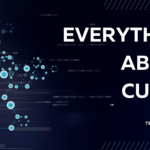Legal Storage and Digitalization of Signatures: Exploring eIDAS 2.0
- 1 There are three types of digital signatures:
- 1.1 Simple Digital Signature: Simple type doesn’t require any verification
- 1.2 Intelligent Document Processing:
- 1.3 Benefits of Digital Signatures:
- 1.4 Retain Signatures under eIDAS Regulations:
- 1.5 Ensuring Data Integrity:
- 1.6 Extended Accessibility:
- 1.7 Streamlined Operations:
- 2 The IDP Process Unveiled: A Five-Step Breakdown
- 2.1 Document Collection:
- 2.2 Preparation:
- 2.3 Classification:
- 2.4 Extraction:
- 2.5 Validation:
- 2.6 Does IDP fit into your business’s workflows?
- 3 Conclusion:
In short:
- Digital signatures offer secure verification for documents and messages, with three types: simple, advanced, and qualified electronic signatures.
- Intelligent Document Processing (IDP) utilizes machine learning to extract data from unstructured documents, automating manual entry and minimizing errors.
- IDP seamlessly integrates into business workflows, streamlining operations, ensuring GDPR compliance, and enhancing sensitive data storage and usage.
In today’s rapidly evolving digital landscape, ensuring document processing security, integrity, and efficiency is paramount for businesses across various sectors. One pivotal technology that has revolutionized this aspect is digital signatures, supported by advancements like Intelligent Document Processing (IDP). Digital signatures, relying on mathematical algorithms, offer a secure method for verifying documents and messages, while IDP leverages machine learning techniques to extract data from diverse document formats. Let’s delve into the benefits of digital signatures, explore the IDP process, and assess how these technologies can seamlessly integrate into your business workflows.
The digital signature is a saving method that depends on math rules that can verify documents and messages.
There are three types of digital signatures:
- Simple
- Advance
- Qualified electronic signatures
Simple Digital Signature: Simple type doesn’t require any verification
Advance Digital Signature: The advance type requires proper identity and verification from the signer
Qualified electronic signatures: High-risk environments where results of security failure can be destroyed.
Intelligent Document Processing:
IDP is a short form of Intelligent document processing. It is a machine-learning technique that brings out data from any document concerning its format.
Benefits of Digital Signatures:
Before discussing the benefits of IDP, it is necessary to define what this component implies. AI and machine learning algorithms IDP use allow extracting data from unstructured documents, including loan applications, invoices, or contracts. This technology is critical in automating manual data entry, saving time, and minimizing errors.
Retain Signatures under eIDAS Regulations:
Our suite of digital archiving solutions, with a signature preservation solution meeting eIDAS standards as an example, is designed to help you comply with the provisions stated in the regulation for digital signatures and seals under eIDAS. Rest assured that our offerings give you the confidence and certainty needed.
Ensuring Data Integrity:
Data integrity is our commitment to your information, which we ensure through digital signatures and seals. We authenticate the signatures of these people, guaranteeing long-term availability.
Extended Accessibility:
In this regard, with our solution, we promise the prolonged preservation and accessibility of documented digitally signed and sealed documents so that critical data is never lost.
Streamlined Operations:
Utilize our retention automation system to simplify critical tasks, reducing manual intervention and the chances of mistakes.
The IDP Process Unveiled: A Five-Step Breakdown
Document Collection:
First, collecting and structuring all relevant documents in print or digital form is necessary. It is essential to understand the time involved in this stage, and thus, it has also been incorporated into the overall IDP schedule.
Preparation:
In the preliminary phase of intelligent software, documents are purified by removing noise, such as marks or stains; orientation is adjusted and cropped while brightness gets modulated. This is where OCR techniques increase accuracy for subsequent IDP operations.
Classification:
Documents are grouped so that relevant data can be chosen and read. At this point, manual verification of automated classification is performed to ensure accuracy.
Extraction:
Pre-processed documentation in the form of visual and textual data is specifically selected. The technology also understands what it is reading, and the extraction accuracy comes to about 98%.
Validation:
Both AI and humans review data. Machine Learning corrects such common errors as misspellings and unifies the information. The Human-in-the-Loop (HITL) component improves Machine Learning precision.
Does IDP fit into your business’s workflows?
Handling Emails: The IDP efficiently processes email messages, mitigating email overload and complexity for proper information management.
Collecting Documents: Make the job easier for clients by allowing them to upload documents from any location, automate data extraction, and connect them directly to a particular customer case.
Classification and Extraction of Incoming Mail: Spend up to 60% less time on document classification and data extraction using automation-enhancing work processes with Digital Mailroom software.
Sensitive Data Storage and Usage (GDPR Compliance): Ensure GDPR compliance by automated anonymization with the help of AI and ML, which can automatically detect incoming information to be anonymized in real-time.
Conclusion:
If you’re already on technologies, transitioning from OCR or RPA applications is necessary. Assess which detailed use cases, or a blend thereof, suit your business requirement for better efficiency and customer satisfaction. Integrating digital signatures and Intelligent Document Processing (IDP) presents a significant opportunity for businesses to enhance security, streamline operations, and improve customer satisfaction. By leveraging digital signatures, companies can ensure data integrity, comply with regulations, and simplify document management processes. Meanwhile, IDP offers efficient data extraction from various documents, reducing manual effort and minimizing errors. Embracing these technologies boosts operational efficiency and paves the way for future innovation and growth in an increasingly digital world.
FAQs:
What distinguishes the three types of digital signatures?
Simple digital signatures require no verification, while advanced signatures necessitate proper identity authentication. Qualified electronic signatures are used in high-risk environments where security failures could have severe consequences.
How does IDP benefit businesses?
IDP utilizes AI and machine learning algorithms to extract data from unstructured documents, automating manual data entry, saving time, and minimizing errors. It streamlines operations, ensures GDPR compliance, and enhances sensitive data storage and usage.
How does IDP fit into business workflows?
IDP seamlessly integrates into workflows by handling emails efficiently, simplifying document collection, automating classification and extraction of incoming mail, and ensuring GDPR compliance through automated anonymization.
What is the IDP process?
The IDP process involves five steps: document collection, preparation (purification and adjustment), classification (grouping documents for data selection), extraction (selecting and processing visual and textual data), and validation (reviewing data accuracy by both AI and humans).
How can companies transition to using IDP effectively?
Businesses can transition to IDP effectively by assessing detailed use cases, understanding their specific requirements, and choosing the right blend of technologies to improve efficiency and customer satisfaction. This may involve transitioning from OCR or RPA applications to fully leverage the benefits of IDP.


















